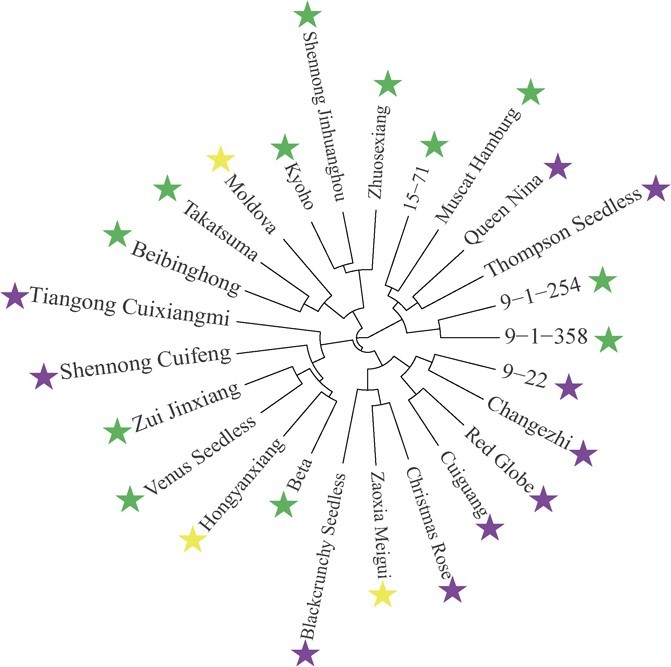Led by a team from Shenyang Agricultural University, this research (DOI: 10.1093/hr/uhad226) was published in Horticulture Research on November 8, 2023. The study utilized whole-genome resequencing of 151 F1 hybrid grapes from the firm-flesh ‘Red Globe’ and soft-flesh ‘Muscat Hamburg’ varieties. Researchers identified 27 quantitative trait loci (QTLs) related to key texture traits and pinpointed 14 candidate genes regulating cell wall metabolism, such as VvWARK2 and VvWARK8, both linked to mesocarp firmness. These findings offer fresh opportunities for targeted grape breeding using advanced genetic approaches.
The study delved into the genetic architecture regulating grape berry texture traits like mesocarp firmness (MesF), pericarp hardness (PPH), and pericarp brittleness (PerB). A high-density genetic linkage map constructed from whole-genome resequencing revealed notable QTLs across various chromosomes. QTLs influencing mesocarp firmness were notably identified in linkage groups 10, 11, 14, and 17, offering critical insights into texture inheritance. Among the identified genes, VvWARK2 and VvWARK8 emerged as essential for maintaining both mesocarp firmness and pericarp hardness. VvWARK8, in particular, plays a role in pectin binding, contributing to overall berry firmness, while VvWARK2 is associated with non-hard-textured cultivars. Additionally, transcription factors like VvMYB4-like and VvERF113 were highlighted for their regulatory roles in cell wall dynamics. These discoveries illuminate the complexity of grape berry texture and provide a path forward for developing firmer, more marketable grape varieties through marker-assisted breeding.
Dr. Yinshan Guo, the lead researcher, remarked, “This study represents a major leap in understanding the genetic factors behind grape texture, a long-standing challenge in breeding. By identifying pivotal genes such as VvWARK2 and VvWARK8, we’ve laid the groundwork for creating firmer, more resilient grape varieties that align with consumer demands and industry standards. This research opens up exciting new prospects for the future of grape breeding and fruit quality improvement.”
The potential applications of this research extend well beyond the lab. With the identified QTLs and candidate genes, breeders can adopt marker-assisted selection to develop grape varieties with enhanced textures, crucial for both table and wine grapes. Firmer berries with improved pericarp durability can not only enhance consumer appeal but also minimize post-harvest losses, providing significant economic advantages for producers. Furthermore, these genetic insights have the potential to improve other fruit crops facing similar texture challenges, broadening the scope of agricultural advancements.
###
References
DOI
Original Source URL
https://doi.org/10.1093/hr/uhad226
Funding information
The work was supported by the National Natural Science Foundation of China (No. 32102317 and No. 31972368), the China Agriculture Research System (No. CARS-29-yc-6), the China Postdoctoral Science Foundation (No. 2021 M693866), the Department of Science and Technology of Liaoning Province (No. 2022030723-JH5/104), the Shenyang Science and Technology Bureau Funds (No. 21-116-3-27), and the Liaoning key R&D Program (No. 2020JH2/10200032).
About Horticulture Research
Horticulture Research is an open access journal of Nanjing Agricultural University and ranked number two in the Horticulture category of the Journal Citation Reports ™ from Clarivate, 2023. The journal is committed to publishing original research articles, reviews, perspectives, comments, correspondence articles and letters to the editor related to all major horticultural plants and disciplines, including biotechnology, breeding, cellular and molecular biology, evolution, genetics, inter-species interactions, physiology, and the origination and domestication of crops.


